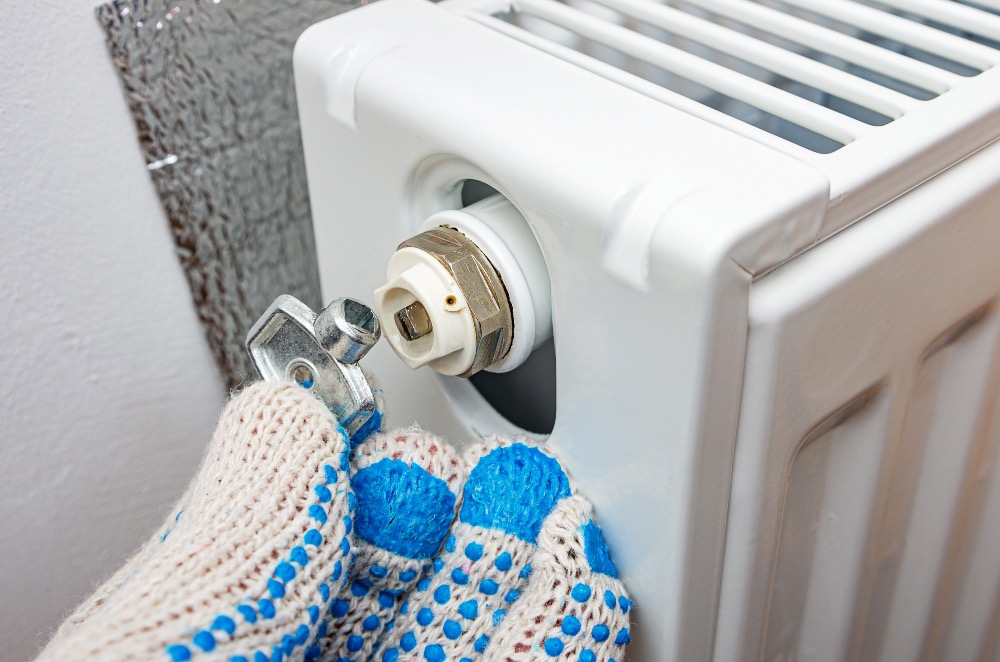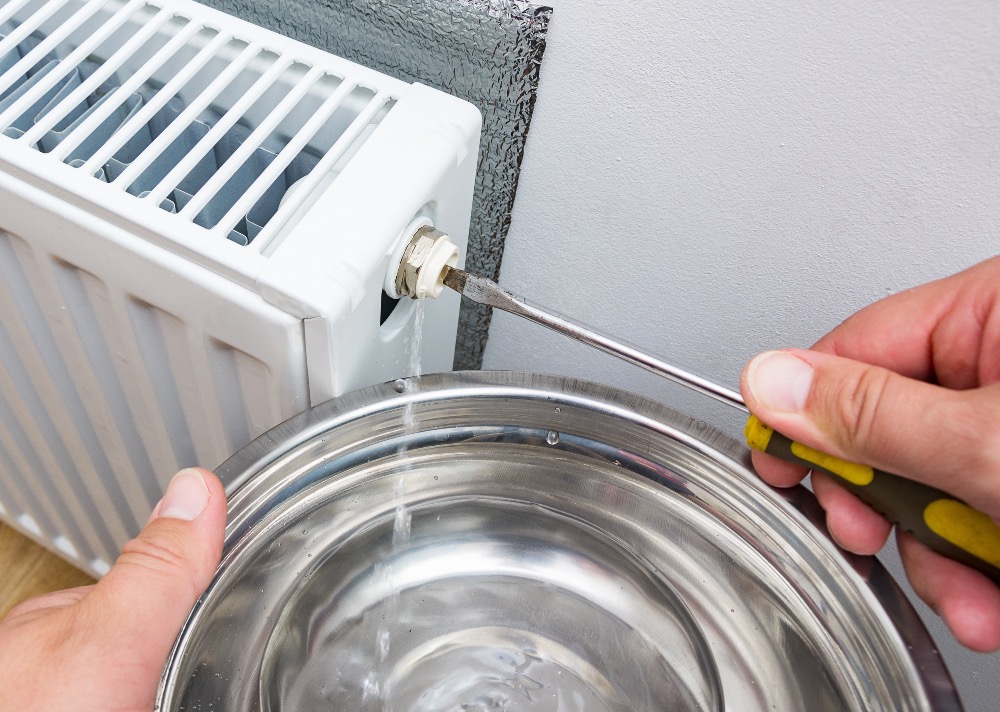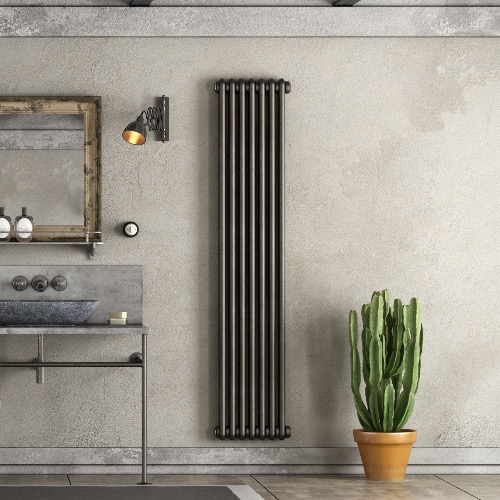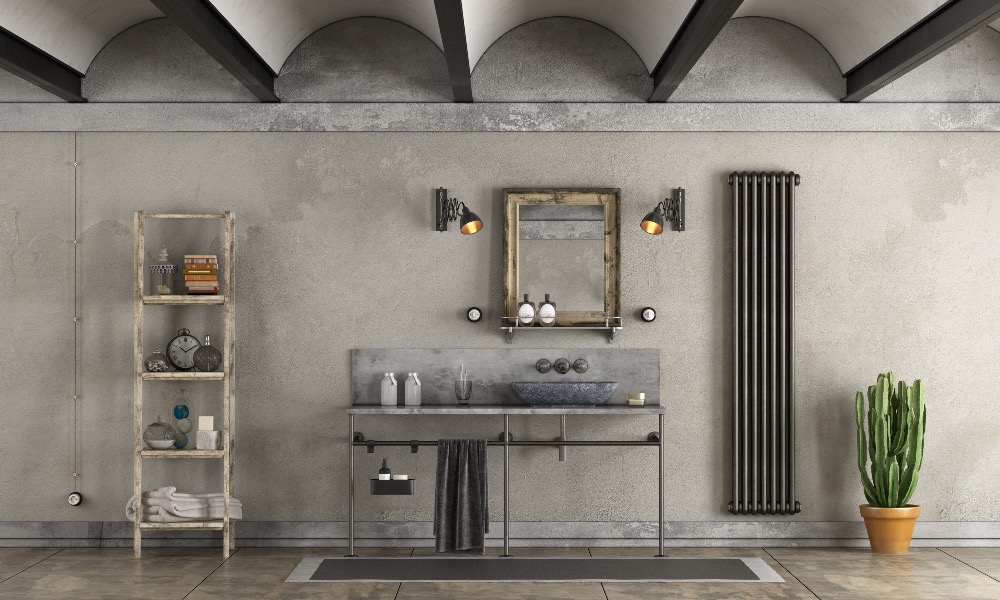Making sure your radiators and heating system work efficiently is really important, especially during the cold UK winters. If your radiator feels cold or some parts of your home aren't getting warm enough, there's an easy first step you can take: bleed your radiator. This helps everything run smoothly.
In 2017, a study found that 69% of people aged 18-24 didn't know how to bleed a radiator. But no worries – here at PlumbHQ, we've got you covered. We know what to do and we're here to help!
Understanding Radiator Bleeding
Air will naturally get into your heating system through generally operating the system and maintaining it. For example, it can be easy to accidentally introduce air into your system when dosing it or installing new parts.
The act of bleeding your radiators involves letting out this trapped air that can get stuck inside. When there's air in your pipes and radiators, it hampers the smooth circulation of hot water. This can result in certain parts of your radiators staying cold, your heating system making strange noises or banging noises, not working as well, and rooms feeling cold despite the effort.
By bleeding your radiators, you're essentially making sure they warm up completely and work efficiently. This not only keeps you warm and comfortable but also helps you save on your energy bills in the long run.

Which Radiator Do I Bleed First?
The order you go in when bleeding your radiators can have an impact. The rule of thumb is to begin with the radiator that's farthest from the boiler, and then work your way back. Typically, this means starting with the radiators on the lower floor before addressing the ones on the upper floors. If you live in a single-level home, start with the room that's the farthest away from the boiler.
Starting with this specific radiator is a smart move to avoid bleeding a radiator that's still hot. By choosing the one farthest from the boiler, you're selecting the first one that will cool down. Generally, you shouldn't be trying to bleed a radiator that is still hot.
Are radiator keys all the same size?
When it comes to modern radiators, you don't need to worry too much about getting the exact size – they're typically made to a standard size that works well.
However, if you're dealing with older radiators, things might be a bit trickier. Radiators that are around 30 years old might not work with newer radiator keys.
Can I bleed a radiator without a radiator key?

Yes you absolutely can - read up here on how to bleed a radiator without a key. You may be able to use a flat-head screwdriver. Failing that you may have to resort to a pair of pliers or something else to help you grip the bleed screw. Just be careful not to damage the valve - The worst-case scenario is having to replace the entire radiator, which is something you'd want to avoid.
How to Bleed Your Radiators
Steps
-
Check For Cold Spots
When your heating is on, do a quick check of all of your radiators. Run your hands along the surface of each of your radiators. If you feel any cold or cooler spots, make a note as those radiators will need bleeding.
-
Turn Off The Heating
Ensure your heating system is completely turned off and the radiators are cold before you start. If there is hot water in the system, you may burn yourself. So, it's better to wait until everything has cooled down.
-
Get Your Radiator Key
Usually found at the back of your cutlery drawer, or the bottom of your dusty toolbox.
-
Locate The Radiator’s Valve
For each radiator you identified earlier you need to locate the bleed valve. This is usually found at the top of the radiator. Place your cloth and container underneath to catch any drips.
-
Use The Radiator Key
Put the key into the valve and turn it counterclockwise. You'll likely hear a hissing sound as the air comes out. As soon as all the air is out, the hissing will stop and water might bubble out, or it could flow out like you see in the picture below.
-
Remember to have a cloth ready
Remember to have a cloth ready to catch any water that comes out. Once you see the water, quickly turn the valve clockwise to close it and stop the water from flowing.
-
Repeat the Process
Repeat this process for each radiator, starting with the one furthest from the boiler.
-
Check Your Boiler Pressure
By letting air out of the system, you will have reduced the pressure in the system. It could be that the pressure in your system it is most likely now too low. If this is the case, your boiler may not operate efficiently or even start. So, once all radiators have been bled, you'll likely need to top up your boiler pressure. You can do this by opening the filling loop until the dial is in the green zone.
-
Turn Your Heating Back On
Once all radiators have been bled, and you have checked your boiler pressure, turn your heating back on and check if they heat up evenly.
Frequently asked questions
What is the correct order to bleed radiators?
Start with the radiator furthest from the boiler and then move towards it, usually meaning from the ground floor up.
Should radiators be bled when hot or cold?
Radiators should be bled when they are cold to prevent the risk of burns from hot water.
Which radiators need to be bled?
Any radiators that are not heating up fully or have cold spots at the top likely need to be bled.
Are radiator keys all the same size?
For modern radiators, yes, they have been standardised. For radiators over 30 years old however, you may find a new radiator key won't fit and may need to try other techniques.
Any more questions?
If you have any queries or questions about the products we sell, or even your next project, give us a shout! We'll try our best to give you a hand.

